This July, when downtown workers start grabbing big orange bikes to head across the river for lunch at Olympia Provisions, many will make an unpleasant discovery: Downtown Portland has hardly any bike infrastructure.
Art Pearce, Portland’s manager for transportation policy, planning and projects, said last month that “public process” for the downtown bike infrastructure project will begin in “”summer of 2016.”
The good news for those future Biketown customers is that this is set to change. The bad news is that it probably won’t until 2017 at the soonest.
Experienced Portland bike users know that the stoplights in most of downtown Portland are already timed to make it pointless for anyone to drive faster than 14 mph. Our “green wave” is a brilliant bit of invisible (and therefore uncontroversial) bike infrastructure.
But invisible infrastructure isn’t much comfort to people experimenting with city biking for the first time — or for people who simply don’t feel comfortable riding in the same lane as people in cars on crowded and hectic streets.
So Thursday’s bike share sponsorship deal adds to the urgency of a project that has been rattling through the local bureaucracy for three years now: adding one or more protected bike lanes to the downtown street grid.

In 2013, Portland received $6 million in federal funds to spend on something it called the Central City Multimodal Safety Project. According to its grant application, the project would include “bikeways that provide more width for cyclists and more physical separation between those bicycling and those driving.”
Which streets would get these nice new bike lanes? That’s been ambiguous so far. By all accounts, the city has resisted writing any plans in stone.
Advertisement
Last May, the city hired a veteran consultant, Rick Browning, to be its project manager. Two days before he started work, he stopped by our office to talk about the project.
Little has happened since, at least in public.
Art Pearce, Portland’s manager for transportation policy, planning and projects, said last month that “public process” for the downtown bike infrastructure project will begin in “summer of 2016.”
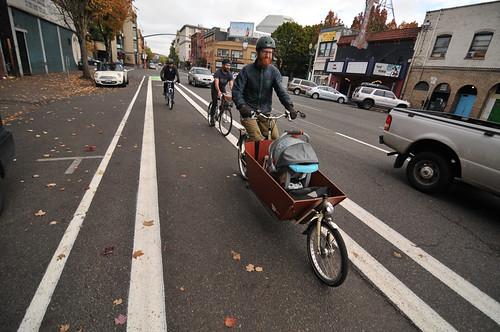
(Photos © J. Maus/BikePortland)
Here’s Pearce’s summary of where things stand, taken from an email exchange with BikePortland late last month:
Phase 1 Planning funds became available for this project October 1 2015. In preparation for this funding availability, during the summer of 2015, PBOT, METRO and Portland Parks engaged in an iterative review process of a draft project scope of work and more detailed project budget. The final version of that scope was sent to Metro in September.
The final revised scope and budget was sent to ODOT in October for approval. ODOT is currently reviewing the submittal to release Phase 1 funds. PBOT is working with ODOT to estimate the date for start of funding. While the project is still not funded, PBOT staff have starting work on preparing a consultant RFP that will be issued in early spring with that consultant team and the public process starting in the summer of 2016.
PBOT staff is excited to get this much anticipated project underway.
Dan Kaempff, a planner for Metro who helped oversee the project, confirmed on Thursday that ODOT and the city are continuing to make small revisions to Browning’s scope of work.
Cities which opened bike sharing systems in an effort to show bike-friendly credentials without making major changes to their streets have seen their systems struggle for riders.
PBOT Spokesman John Brady said Thursday that the protected bike lane project, once it’s built, will probably be good for downtown bike sharing. He also noted that downtown isn’t the only place bike sharing will be available.
Still, if there’s one major flaw in Portland’s bike share plan after Thursday’s sponsorship announcement, this is it. Cities like San Antonio, Chattanooga and Denver, which opened bike sharing systems in an effort to show bike-friendly credentials without making major changes to their streets, have seen their systems struggle for riders. Cities like New York and Montreal, which introduced bike sharing after big investments in their central-city bike networks, have seen stronger ridership.
There are also cities like Seattle, where a lack of downtown bike infrastructure may have contributed to a slow start for bike sharing, but where the city is rapidly building infrastructure to help it work. In May 2015, Seattle Mayor Ed Murray made a surprise announcement that a protected bike lane would be on 2nd Avenue in time for the bike share launch. Four months later, a half-mile bidirectional bike lane was on the ground, complete with bike signals.
Portland proved last year that when the stars align, it can move quickly. The new buffered bike lane on 3rd Avenue — project-managed by Browning, as it turned out — is a big improvement for the downtown network.
Portland’s transportation bureau has six months before Biketown starts rolling. Will it bring the same sense of urgency to building better bikeways as it did to building a fruitful partnership with Nike?
— Michael Andersen, (503) 333-7824 – michael@bikeportland.org

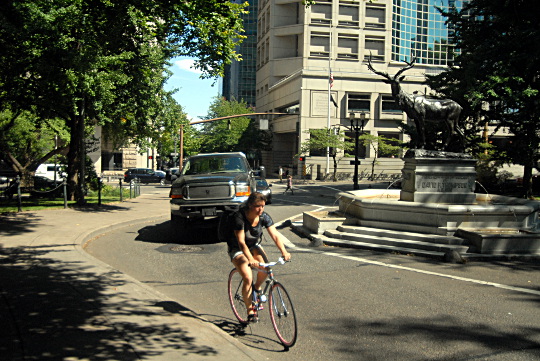
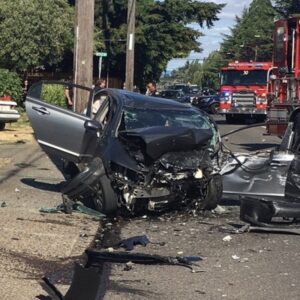
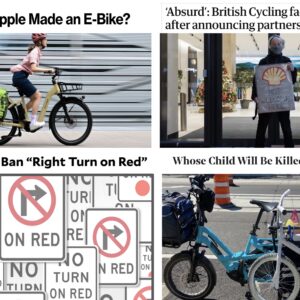
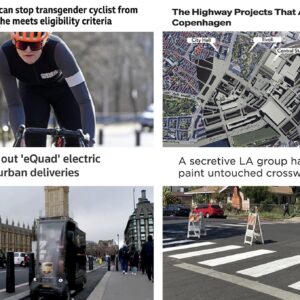
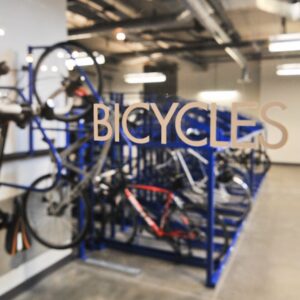
It’s frustrating as heck that Browning was hired 8 months ago (May 2015) and the bureaucrats are “continuing to revise the work plan.” The basic work scope must have been developed in connection with the application in 2013.
I was a bureaucrat for part of my career, but the glacial pace of this project is ridiculous. Too many meetings and no action.
Plus, it has to go though ODOT, and that’s never a good thing.
It almost seems hopeless with ODOT being involved. Between them and the Portland Biz Alliance mangling up things we Portlanders want to do to improve the city (and mangling up improved business conditions, etc) I just don’t even know what to say about this junk.
Wow, four months to install a protected bike lane? We can only dream of that kind of turnaround here! We really need to work on a way to speed projects up here while still engaging the public.
If done right (i.e. nothing like that buffered bike lane on Third), this project could be transformative for downtown. Most of the streets downtown are two to three lanes of uni-directional travel plus parking. There’s no reason any street should be that wide, especially in the most pedestrian-dense neighborhood in the city. Nearly every street downtown could benefit from a road diet, by converting some of the widest streets to one or two lanes with physically-separated bike lanes. Or go back to all two-way streets, but that’s a much larger undertaking.
“Or go back to all two-way streets…”
You keep suggesting this, but converting 1-way to 2-way streets would make things categorically worse for bicycling. Why? Because green waves are impossible with a two way street grid! Your solution would mean that bike traffic in one direction would consistently have to stop at every light.
1-way streets are just fine as long as every intersection is signalized.
That depends on how you define “worse”. If you mean slower, then yes, that’s true, however some tweaking can be done with bike-only signals. If your concern is safety, then two-way streets are much better. American downtowns were converted to one-way streets for the sole purpose of moving car traffic more efficiently. The lack of of an oncoming lane coupled with wider travel lanes creates an urban highway and encourages dangerous driving. People have been shown to drive safer on two-way streets vs. one-way streets. The signal timing does mitigate this to some degree, but what would be far better is if every street was two lanes, one in each direction. It feels more dangerous to drive on narrow, two-way streets, and people act accordingly.
I think you underestimate the positive benefit of the ~16 mph de facto speed limit downtown.
Perhaps. That definitely makes a huge difference (thanks, Peter!). Maybe it’s the amount of lanes that feels unsafe? Three lane one-way streets are scary to ride on without dedicated infrastructure, especially if you need to change lanes to turn left.
I still stand my my claim that nearly all downtown streets would benefit from a road diet. No streets should be more than two lanes.
Peter began work for the city long after the one-way operation went into effect. Better to thank Bill Kloos (RIP) and others that no longer work for PBOT.
I disagree. With three lanes, through traffic (including bikes) can use the middle lane. The right and left lanes get backed up with turning traffic that must wait for crosswalks to clear.
Backed up car traffic is a good thing. People driving slower is safer for everyone.
No one wins when everyone is chronically stuck in the turn lanes.
One ways downtown, no bike lanes, NO PROBLEM! I take what ever lane is open. Typically I follow the Oregon driver’s manual and take the left lane so I am in front of the driver. The driver see’s me then. I lead the motorist through narrow spots, they try to squeeze through, they sideswipe someone then pull over.
how do you handle every lane being jammed? do you sit and huff tailpipe for up to tens of minutes? or do you do what i do (e.g break the law).
Ill take a two way slower street over a 1 way race track. It’s not just about bikes..it’s about people.
4 months? Naw, that took way longer than that. We did the original “test project” on 3rd many more than 4 months ago.
The buffered lane is only one of many things that is supposed to be done too. I’m still waiting on the businesses getting to build out the pedestrian only area and such, then it will REALLY liven up. Even with just the bike lane it still makes 3rd a pretty desolate place – for any mode. There aren’t very many cars on that segment either.
Car-free transit mall? Naito 2-way path? a couple other streets could get done but it is hard to see much happening between now and summer. Not without the PBA giving some serious ground
A car-free bus mall is a great idea, but not necessarily a great bike project. We should do it more for the people who on a daily basis try to drive on the MAX tracks, the bus lanes, or turn left when they’re not supposed to. Simply banning cars would make it great for riding a bike, but not ideal since left turns are still banned. Banning cars would be a quick and easy fix (just install some bollards and signs), but we should still build protected bike lanes elsewhere.
Portland had a car free transit mall, as have many cities, and they typically failed financially due to lack of density. They work well in dense metropolitan areas like Chicago, New York, Paris, Amsterdam, etc.
Chicago’s State Street bus mall also failed in the 70’s. The reason they failed was not lack of car traffic, but a sustained flight from the inner cities after WWII to outer suburbs and shopping malls.
If anyone’s interested, here’s a useful study of success and failure among pedestrian malls, linked in the Monday Roundup a while back:
http://downtowndevelopment.com/pdf/americanpedmallexperiment.pdf
Factors behind the 11 percent of American pedestrian malls to succeed include universities, beaches, lengths of no more than 4 blocks, high tourism and populations under 100,000.
Like Adam says, most of the data here comes from a very different period in the history of American cities. What puzzles me about Portland’s current transit mall is that it’s by far the worst street in downtown to drive on — nobody who knows better drives there on purpose unless they’re either headed to a hotel door or a garage. And there’s hardly any parking. So what good is that one auto lane to businesses and traffic? It’s as if we’re gripping a travel lane in front of us like a cross to ward off vampires.
The transit mall as it is doesn’t seem to be wildly successful, but I personally don’t see how removing the auto lane would make it significantly less successful. I’d love to get the view of Paikiala and others on this.
Is your claim really that businesses on 5th and 6th in Downtown Portland might have to shutter their windows if we remove auto traffic from those streets? If so, count me as skeptical.
There really needs to be a better connection northbound from Terwilliger. Southbound is great with Broadway to Terwilliger. Northbound, the bike lane abruptly disappears when Terwilliger becomes 6th, and then you’re sandwiched between traffic and tracks, often needing to get over 2 lanes of traffic to turn left to PSU.
And turning left to get to the bridges is prohibited at most intersections forcing people who bike to interact with agitated and jammed rush-hour traffic.
What about a 2-stage turn?
This requires turning left and getting in front of agitated rush hour traffic on the cross street. IMO, “interested but concerned” cyclists are not likely pull a maneuver that many motorists perceive to be aggressive without a bike box and/or bike signals. I personally prefer to perform a midblock right turn into the crosswalk during a pedestrian signal which I believe is illegal (but safe at low speeds).
A bike path could easily and cheaply be built through the park connecting Terwilliger to 4th.
Could you define ‘easily and cheaply’?
How does a path to 4th get you down 6th to PSU?
An asphalt path through a city owned park? Must be a billion or so, huh?
I proposed a way to get from Terwilliger to the best northbound street in the city.
I guess you have a better idea? lets hear it….
Under Armour is about to pave the whole park. Getting across the park doesn’t get you across Sheridan or past the traffic turning south onto Barbur. That’s also a bit of downhill that you’ll have to climb again on the way to PSU. IME 6th is as good as 4th once you’re past the offramp and the traffic starts to realize it’s not the freeway anymore.
The bike lane there was recently widened and lengthened, but the car lane on the right side still completely takes over at the corner of the intersection. It’s a tricky intersection where cars commonly run reds and block traffic because they pulled into the intersection without making sure they have room to clear it. This is because of the two bottlenecks from Sam Jackson/Terwilliger and from Sheridan that are really sluggish in rush hour, and they’re all trying to get on 26. I travel through that by bike nearly every day. The bike box and the fact that northbound cars cant turn right really helps, but the lane on the other side creates sort of an optical illusion that a bike and a car could both cross when actually the bike gets pinched.
Pat, 6th starts at Sheridan. Maybe you mean when crossing I-84?
Actually the “green wave” signal timing may need to be tweaked to support bikeshare by lowering the MPH from 14 to X (10? or 12?). I would expect that these bike share bikes due to design (weight, front loaded basket, geometry and shaft drive internal hub etc.) and novice riders would have a much lower average MPH. More like a “Dutch” average of 10 mph.
I don’t know if this is new, but I hadn’t seen it before. PBOT has a page on their website about 10c gas tax proposal, that will hopefully be before the voters in May:
https://www.portlandoregon.gov/transportation/64188
One document lists the projects that the revenue could be used for:
https://www.portlandoregon.gov/transportation/article/558947
One of the projects is “Central City; fill out the protected bike lane network identified in the Multi-Modal project”, with an estimated cost of $2,834,759. Presumably that would be in addition to the $6 million grant.
So while I am incredibly frustrated that this is taking so long, at least it seems like they’re planning on spending serious money on it. If they combined this with some SDC funding, which are coming in by the bucket load right now, this could actually be a really trans-formative project.
Will this be another Portland transportation planning failure? I hope not. We certainly have reason to be skeptical considering the mixed results of Williams and the failure 28th Street efforts. I would hope that PBOT will consider ‘lessons learned’ from those projects.
This cannot be another transportation ‘go-it-alone’ project. BPS needs to be a active, equal partner.
Having designed and implemented protected bikeways through downtowns in other cities, I know that the work scope needs to extend beyond the curbs and consider the adjacent development context; it MUST be comprehensive– land use needs to be a central consideration. That was the only way we were able to get buy-in from property owners and business people who were hostile to road diets, loss of parking, etc.
A consultant team with demonstrable land use and transportation expertise will be required to make this work, otherwise it will be ‘deja vu all over again’ and as you astutely noted, the bikeshare will be less successful.
Adding in another stakeholder would make things drawn out even longer. The BPS are struggling at a glacial pace to finish the comp plan and central city plan. To ask any more out of them would be to put the brakes on this project. Instead, we need a very politically savvy and bike-focused project manager that can eek out the best outcome without making the business community go apes. Or better yet, the political support from the city council to tell the PBA to shove it when the best and most obvious bike project is chosen and built over their objections.
“Glacial” is understatement. Work on the new Comp Plan started in *2007*.
Portland’s backroom special-interest-centric stakeholder process is one of the primary reasons Portland has so little high quality bike infrastructure on arterial/commercial roads. This anti-democratic process should be ended. Corporations and businesses should have no more voice than citizens.
Maybe just some leaders and planners who have ridden a bike to work without an entourage. Also, cops on bikes.
What’s the possibility of some shared sidewalks? Sidewalk riding should be made legal especially in areas where it is too dangerous to ride on the street. The transit mall would be a great area for a shared sidewalk since it is so wide. That has to be an obvious possibility especially as it runs north-south through the center of downtown. There is even enough room here to paint a dedicated bike path.
If the Biketown bike share is intended to get more people commuting by bike, then the obvious targeted population is going to be the casual cyclist. The casual cyclist is not going to be the militant “right of the road” biker who tends to demand his/her right to ride on the road despite the obvious physical differences between bike and car (the laws of physics guarantee that the cyclist will always lose when impacted by a car).
A shared sidewalk would replicate the dilemma between car and bike on the road with bike and pedestrian on the sidewalk. In both instances, commuters must slow down to the lowest common denominator. Bikes would have to make way for pedestrians on the sidewalk as cars already make way for bikes on the road. By opening the sidewalks in downtown to the bicyclist would be an endeavor of shared civic empathy. Downtown Portland has many wide sidewalks. Perhaps we could even get a militant pedestrian rights sidewalk movement going to raise awareness and keep Portland weird.
Shared sidewalks coupled with dedicated on road bike ways to northwest Portland, the zoo (Canyon Road) and Terwillger/Barbara Blvd, would about do it for downtown cycling.
By the way, in Japan, sidewalks are widely used as shared pathways for cyclists and pedestrians and from what I’ve seen both groups coexist in a polite, peaceful and civilized fashion.